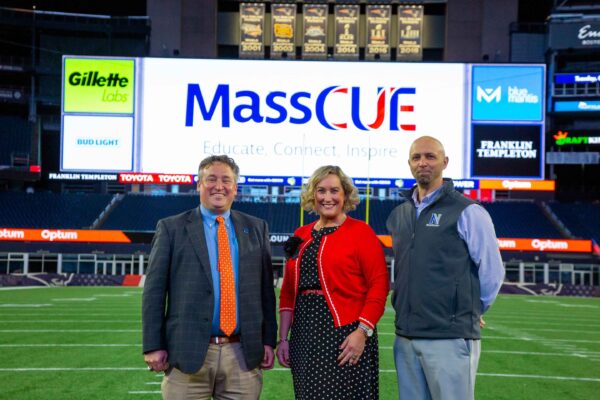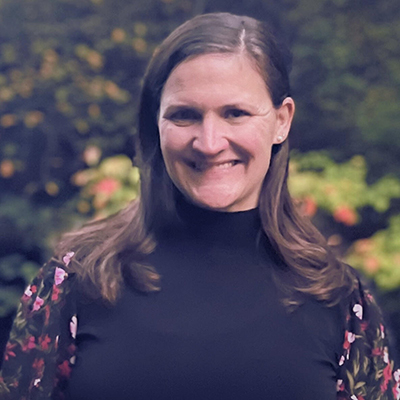by Cathy Collins
Original post in Education Week’s Global Education blog, January 25, 2019
Global collaboration projects, which allow students to work with peers across geographical boundaries, aren’t just interesting, engaging, and fun. They also address several of the ISTE Standards for Students, including “Digital Citizen,” “Global Collaborator,” and “Empowered Learner.” Each year, a wide range of global education projects are demonstrated during the MassCUE Global Ed and CUE Kids student showcases, allowing Massachusetts students to take the lead in sharing about their work, thereby highlighting their ownership of the learning process and the role of student voice in successful learning outcomes.
 Providing opportunities for global collaboration not only engages students, it also builds cultural understanding and empathy and helps with development of important communication and problem-solving skills. This year, student projects focus on civic engagement and social justice; leadership development through global service and STEM/STEAM learning; and international travel and exchange programs.
Providing opportunities for global collaboration not only engages students, it also builds cultural understanding and empathy and helps with development of important communication and problem-solving skills. This year, student projects focus on civic engagement and social justice; leadership development through global service and STEM/STEAM learning; and international travel and exchange programs.
STEM/STEAM and Inquiry Skills
Service Learning
Mashpee students in Amanda Hough’s Technology and Engineering class researched the country of Laos by skyping with Dr. Rachel Sheffield from Australia to learn about her mission work in Laos and how they might contribute to it. Students created 3D prototypes of items to help students in Laos, including soup strainers and shower caddies. When issues arose with importing and exporting the goods into Laos, the 3D printed files were sent to Dr. Sheffield, and the objects were printed in the country. Mashpee students continued skyping with Rachel and some of the recipients in Laos to see the impact their products had and to learn how to revise them to make them more useful. Students also printed games, which were stored on library boats traveling along the Mekong River, to teach children in remote villages. For the MassCue showcase, students created a movie with original music to explain their engineering project, designed original logos for the presentation, conducted newspaper interviews, and learned how to cook authentic Laotian food.
Rising Sea Levels in Boston
Eighth-grade students from Dedham Middle School completed a project-based-learning unit to answer the question: How can a coastal city, like Boston, be redesigned to lessen the impact of bigger storms and rising sea levels? Students created concept maps to develop their ideas. They then questioned each other to enhance and further define their ideas. Once ideas were fully developed, they drew and explained their designs, which were further refined after looking at coastal maps showing sea-level rise predictions and real-life solutions. During the last stage of the project, students hand-built models or used TinkerCAD software to print 3D versions of their designs. These were presented for feedback to a professional audience involved in making decisions, providing input, and finding solutions for the effects of sea-level rise for Boston.
Dedham students also participated in a Socratic seminar with the central question, “Are humans causing extreme weather?” Students used Google Drawings to create digital concept maps to develop questions they felt were important to answer. Drawings allowed them to create live links to any research and evidence they found on both sides of the question. The emphasis was on student understanding of both sides of the debate in order to develop solid arguments. Students then questioned each other’s maps to help expand on their ideas. As they continued to build their evidence, additional questions were introduced to add depth to their arguments.
Logo for Ukrainian School
Through a partnership with World Wise Schools, graphic-design students at Foxborough High School partnered with students at School One in Romny, Ukraine. The students at School One wanted to open a youth center that offered after-school ecology workshops and were in need of a logo. Students used a design thinking process to empathize with peers in Romny. They crossed language barriers by connecting through social media and exchanging videos. They exchanged ideas and feedback online and created the final logo for the youth center using Adobe software.
Virtual Safari
Elementary students from Middleborough’s public schools participated in a virtual live safari to South Africa, where a variety of wild animals could be seen roaming about in their natural habitat. Teachers and students communicated with the expert safari guides as they watched from their classrooms, allowing students an opportunity to ask questions and have them answered in real time. The virtual learning session was provided by Wild Earth Safari Live.
Global Understanding, Empathy, and Leadership Skills
Girls in Afghanstan
Students at Sharon Middle School participate in annual video conferences with a partner school in rural Afghanistan. As they learn about their peers, they work to advocate for girls’ education and have organized fundraisers to enroll more girls in the Afghanistan school and purchase needed school supplies. This connection has allowed students to not only gain a better sense of the world around them, but also to develop their the 21st-century skills of raising awareness, public speaking, and organizing. Students’ comments about their experience are highlighted below:
“I like how we actually have the chance to see and communicate with the girls at the Zabuli Education Center. I find it interesting to learn about their cultures, beliefs, and lifestyles.”
“It is important to me because it helps me see what other people’s lives are like and to help them have more positive lives.”
“I have learned how to speak a bit of Dari, the language the girls there speak, and how much we take for granted. They are willing to risk everything just to get an education, whereas we are reluctant to go to school.”
“I have learned how to spread the word about the cause and to be more of a leader.”
Service Learning the in DR
Norton High School service-learning students completed a volunteer project in the Dominican Republic. Thirteen students worked for five days, alternating between mentorships for at-risk girls in the mornings and construction in the afternoons. Students worked in conjunction with the Mariposa Foundation to empower young girls and women to end generational poverty. Students traveled through the group EF and participated in community-service work such as building walls, gardening, tutoring, and working with the girls in a variety of capacities like sports, sewing, and cooking. Throughout the week, they connected with and integrated into the community, and the students bonded with the girls. They committed themselves to continue their journey as global citizens by finding ways to support the Mariposa Foundation from home as well as to seek out additional opportunities to make an impact globally and locally.
Resources
These projects would not be possible without strong partnerships, such as those listed in the descriptions above. Asia Society has collected a list of additional organizations that are available to help make connections. Asia Society also has an online professional-development module to help you get started called, “Enhancing Instruction Through Global Collaborative Projects,” Module 8 in the Career Readiness in a Global Economy series (free log-in required).
Additional resources:
- ISTE Professional Learning Networks, including Global Collaboration PLN (must join ISTE to access).
- National Geographic Educators: Multimedia activities, lessons, and units aligned with national standards as well as grant opportunities for teachers.
- Primary Source: Promotes history and humanities education by connecting educators to people and cultures throughout the world.
- Teachers for Global Classrooms Capstone Project: See “Global PBL Opportunities” section; listed under the tab “MORE.”
- ASCD’s annual Global Leadership Summit.
Editor’s Note: Each year, Cathy Collins, the library media specialist and Chinese exchange-program coordinator for the Sharon school district in Massachusetts and a board member of MassCUE, demonstrates student engagement in real-world problem-solving through global collaborative projects at the annual MassCUE (Massachusetts Computer Using Educators) Conference. Here she shares some examples of student projects and tools to help you start similar projects.
Connect with Cathy and Heather on Twitter.
Image created on Pablo.
 Print this post
Print this post




